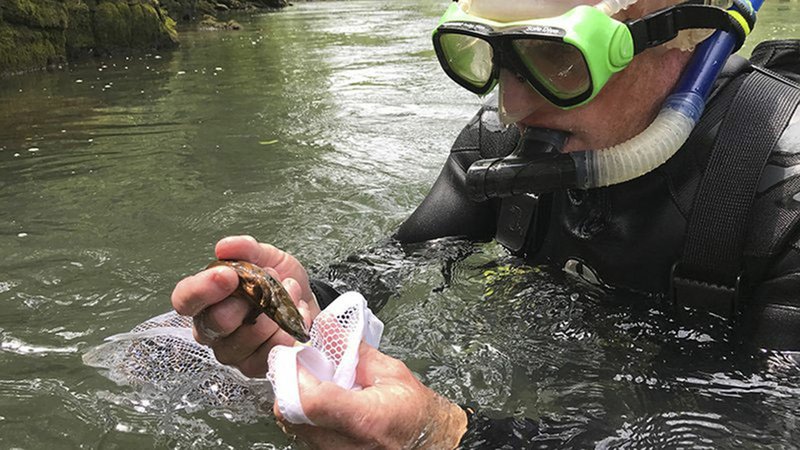The dwindling population of the endangered Ozark hellbender took a positive turn last month when Arkansas Game and Fish Commission biologists released more than 100 of the rare aquatic salamanders into the Eleven Point River.
It was the state's first stocking of captive-bred hellbenders from a breeding program at the St. Louis Zoo and part of a larger effort to restore populations of the endangered species in the Eleven Point, one of only three streams where Ozark hellbenders exist after decades of declining numbers.
Eleven Point is in Randolph County, north of Pocahontas.
Ozark hellbenders were placed on the federal endangered species list in 2011. The species inhabited the Spring River in robust numbers as recently as 30 years ago, but has disappeared from the Spring over the past 15 years.
Although there's no conclusive evidence that pinpoints an exact cause for the hellbender's decline, several factors likely have contributed. Loss of habitat has been a prime culprit, with increased sedimentation causing the large rocks and boulders preferred by hellbenders to be smothered by gravel and silt, said Kelly Irwin, herpetologist with Game and Fish.
Increased nutrients or toxins from runoff also may have affected the animal's aquatic habitat. Disease may play a role, as well. Chytrid fungus, a disease attributed to major declines and extinctions of many amphibian species around the world, has been documented in Ozark hellbender populations.
The Missouri Department of Conservation has witnessed similar declines in Ozark hellbenders on its side of the state line. Missouri officials began working with the St. Louis Zoo in 2002 to establish a captive breeding program, capturing animals from the wild and allowing them to breed in artificial streams at the zoo.
They also collected eggs from the wild and hatched them in captivity. The captive-breeding program produced its first Ozark hellbenders in 2011. Since then, the Missouri Department of Conservation has introduced roughly 3,500 animals into the Eleven Point, Current and North Fork of the White rivers in Missouri.
"The Ozark hellbender is an animal that's been declining for many, many years, and we're trying to do our best to save this animal right now," said Jeff Briggler, the Missouri Department of Conservation's herpetologist. "Propagation is one of those things that you don't always want to get into because it can be expensive, but we really felt like we had no choice. Based on current populations, this is the best thing we can do to save this animal in the long term."
"Admittedly, Ozark hellbenders are not the most charismatically appealing animal," Irwin said. "They're not a large game species or a beautiful bird species of some sort, but they're very important indicators of our environmental system health, a canary-in-the-coal-mine species. As the Ozark hellbender population goes, so goes the quality of your fisheries resource."
Sports on 09/12/2017

